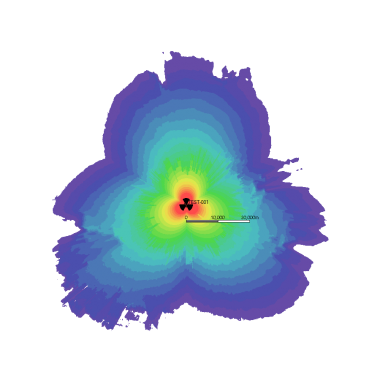Identifier
Uplink (MHz)
Downlink (MHz)
UL EARFCN
DL EARFCN
Duplex Spacing (MHz)
Coverage Area (-100 dBm)
Overview
The 3GPP B20 (800 MHz) LTE band is the second most popular band used by public mobile operators for LTE network deployments, and is excellent for wide area coverage in regional and rural environments, for in-building coverage, and represent an important digital dividend arising from the shift by TV broadcasters to digital transmissions.
800 MHz spectrum has helped several operators to launch LTE services faster and meet market, investor or regulatory coverage requirements. For many operators using the B20 band enabled nationwide or near-national coverage to be achieved in the shortest possible time.
Mobile carriers have flexibility to deploy LTE using band 20 as a single band or as part of a multi-band network, with reportedly over 175 commercial networks in 79 countries and territories (April 2018). LTE-A or LTE-Advanced Pro technologies can be deployed using carrier aggregation to combine various bandwidths of band 20 with other carriers.
B20 (800 MHz) is also an extremely popular choice for eMTC (LTE Cat M1), and NB-IoT (LTE Cat NB1) due to the deep penetration and wide coverage characteristics exhibited by the 800 MHz band. Due to its large wavelength, B20 does not easily support Massive MIMO and beamforming technologies.
Carrier Aggregation Configurations
There are 29 CA configurations recorded for this LTE frequency band. To search CA bands please use LTE Carrier Aggregation.
| Configuration Name | Component Carriers | 4G LTE Frequency Bands | Max. Aggregated Bandwidth |
|---|---|---|---|
| CA_1A-20A (B1+B20) | 2 | B1 (2100 MHz) B20 (800 MHz) |
40 MHz |
| CA_3A-20A (B3+B20) | 2 | B3 (1800 MHz) B20 (800 MHz) |
40 MHz |
| CA_3A-3A-20A (B3+B3+B20) | 3 | B3 (1800 MHz) B20 (800 MHz) |
60 MHz |
| CA_3C_20A (B3+B3+B20) | 3 | B3 (1800 MHz) B20 (800 MHz) |
60 MHz |
| CA_7A-20A (B7+B20) | 2 | B7 (2600 MHz) B20 (800 MHz) |
40 MHz |
| CA_7C-20A (B7+B7+B20) | 3 | B7 (2600 MHz) B20 (800 MHz) |
60 MHz |
| CA_8A-20A (B8+B20) | 2 | B8 (900 MHz) B20 (800 MHz) |
30 MHz |
| CA_20A-28A (B20+B28) | 2 | B20 (800 MHz) B28 (700 MHz) |
40 MHz |
| CA_20A-31A (B20+B31) | 2 | B20 (800 MHz) B31 (450 MHz) |
25 MHz |
| CA_20A-32A (B20+B32) | 2 | B20 (800 MHz) B32 (1500 MHz Suppl. DL) |
40 MHz |
Wireless & Mobile Network Operators
There are 0 mobile and wireless operators using this band. To perform search queries please use the Mobile Network Operators section.
No networks have been recorded using this frequency band. Our team is working diligently to expand this database, if an error or omission is noticed we appreciate you letting us know.
